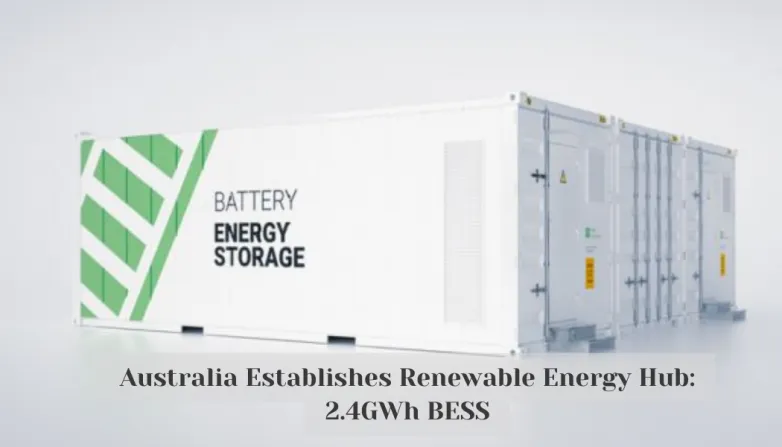Australia Establishes Renewable Energy Hub: 2.4GWh BESS
- Experience the world's largest energy storage hub in Melbourne! The city's 1,200 MW/2.4GWh two-hour duration battery system has 365 job opportunities and can power over a million homes. Be part of the government's mission of zero emissions by 2050 with Melbourne Renewable Energy Hub.

The Melbourne Renewable Energy Hub is the largest of its kind in the Asia-Pacific region and one of the biggest in the world. It is a 1,200MW/2.4GWh two-hour duration battery energy storage system that will provide storage for wind, hydro and solar energy from regional Victoria. The project will create 365 job opportunities and power up a million homes. Federal Minister for the Environment and Water, Tanya Plibersek, stated that the project is part of the government’s aim to transform the energy system to net zero emissions by 2050. Other large BESS projects in Australia include the Gympie Regional Energy Storage Stage 2, Goyder South Project, Kentbruck Green Power Hub, Bonshaw Solar PV Park, and Geelong Big BESS, among others.
What are the Benefits of the Melbourne Renewable Energy Hub?
- The Melbourne Renewable Energy Hub will be able to store renewable energy generated from wind, solar, and hydro sources, and then release the energy as needed to support the electricity grid.
- The project will create 365 jobs in regional Victoria and is expected to generate enough energy to power up a million homes.
- The project will also help reduce the cost of energy as it will be able to store excess energy for use during peak times when energy costs are higher.
- The battery system will help to reduce energy waste and improve energy efficiency by making sure energy produced is used efficiently.
- The Melbourne Renewable Energy Hub will provide reliable and clean energy supply and help reduce greenhouse emissions.
- The project will also support the government’s aim to transition to net zero emissions by 2050.
Also read
- Poland funds eight energy clusters, thousands of rooftop solar installs
- Vena Seals Financing for 300-MW Opus Solar
- China’s fossil generation dips as solar output surges in November
- Eurowind buys 370-MW Polish wind-solar pipeline to accelerate build-out
- Uniper Backs Scotland Solar, Wins German Battery Approval

